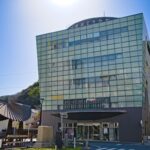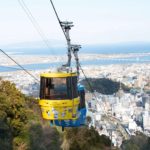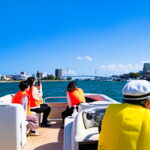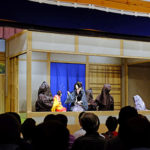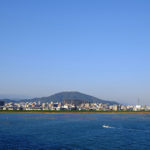Gokasho Mairi (Tour of Five Temples)
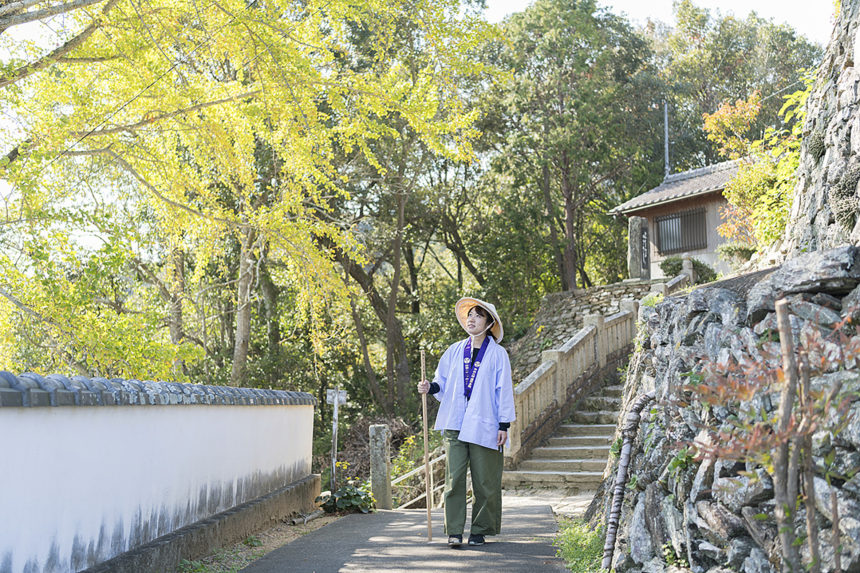 There are 88 temples along the Shikoku Pilgrimage route, and the first 23 are located in Tokushima Prefecture. The city of Tokushima is home to temples 13 to 17. Visitors who would like to experience the pilgrimage can complete a tour of these five sanctuaries, an undertaking called the gokasho mairi. The routeis less than eight kilometers long and has no steep hills, so it is easily walkable within a day.
The five temples are thought to have been established between 673 and 816. Over the centuries, however, their buildings were destroyed in battles or fires and rebuilt a number of times. As a result, the Buddhist statues and sacred objects held by each temple represent a mixture of historical periods.
The temples belong to different sects of Buddhism and honor different main deities, but they all have links to the monk Kukai (774–835; posthumously known as Kobo Daishi), the central figure of the Shikoku Pilgrimage.
Kukai was born in the neighboring prefecture of Kagawa, and there are many stories about him associated with the Shikoku Pilgrimage. After his death, priests made visits to Shikoku to follow in his footsteps. Ordinary citizens began doing the pilgrimage during the Edo period (1603–1868), to seek cures from illnesses, to express their faith, or simply to embark on a sightseeing trip.
If you visit any of the temples of the gokasho mairi, you are likely to see people dressed in what has become the standard pilgrim’s uniform. This includes white clothing to show sincerity and purity of mind, a traditional sedge hat that protects the wearer from the elements, and a walking staff. Dressing up this way, however, is not mandatory and some visitors wear regular street or hiking clothes.
There are 88 temples along the Shikoku Pilgrimage route, and the first 23 are located in Tokushima Prefecture. The city of Tokushima is home to temples 13 to 17. Visitors who would like to experience the pilgrimage can complete a tour of these five sanctuaries, an undertaking called the gokasho mairi. The routeis less than eight kilometers long and has no steep hills, so it is easily walkable within a day.
The five temples are thought to have been established between 673 and 816. Over the centuries, however, their buildings were destroyed in battles or fires and rebuilt a number of times. As a result, the Buddhist statues and sacred objects held by each temple represent a mixture of historical periods.
The temples belong to different sects of Buddhism and honor different main deities, but they all have links to the monk Kukai (774–835; posthumously known as Kobo Daishi), the central figure of the Shikoku Pilgrimage.
Kukai was born in the neighboring prefecture of Kagawa, and there are many stories about him associated with the Shikoku Pilgrimage. After his death, priests made visits to Shikoku to follow in his footsteps. Ordinary citizens began doing the pilgrimage during the Edo period (1603–1868), to seek cures from illnesses, to express their faith, or simply to embark on a sightseeing trip.
If you visit any of the temples of the gokasho mairi, you are likely to see people dressed in what has become the standard pilgrim’s uniform. This includes white clothing to show sincerity and purity of mind, a traditional sedge hat that protects the wearer from the elements, and a walking staff. Dressing up this way, however, is not mandatory and some visitors wear regular street or hiking clothes.
<簡体字>
四国遍路之五寺巡游
四国遍路(四国参拜路线)全线共有88座寺庙,其中前23座位于德岛县,第13至17号寺院就在德岛市内。想要体验朝圣之旅的来访者可以围绕这五个圣地来一次“五寺巡游”。这条路线全长不到8公里,没有陡峭的山坡,一天便可以轻松走完。
这五座寺庙大约建成于公元673年至816年之间,只是若干世纪以来,建筑物在战争和火灾中被不断摧毁和重建,因此,每一座寺庙里的佛像和圣物都隶属不同历史时代。
这些寺庙属于不同的佛教教派,供奉的主佛也不同,但都与高僧空海(774-835,谥号弘法大师,见小贴士)有关。
空海法师是四国遍路的核心人物,很多故事都讲述了两者的渊源。他圆寂后,全国各地的僧侣纷纷前往四国,追随他的足迹。到了江户时代(1603-1868),普罗大众也开始踏上这条朝圣之路,或借此寻求治愈疾病的方式,或表达忠诚的信仰,或只是观光旅行。
在五寺巡游途中,你随时可能遇见穿着标准朝圣服装的人——白色薄衣代表真诚和纯洁,传统的斗笠和金刚杖则用来保护身体。当然,这种装束并非强制性,也有来访者会穿着日常私服或户外远足的服装来走四国遍路。
小贴士:
空海出生于德岛县隔壁的香川县(旧名赞岐)。31岁时,他作为遣唐使前往长安,在青龙寺跟随密宗第七代祖师惠果学习。两年后,他回到日本,开创真言宗,并开辟了日本佛教圣地高野山。今天,中国西安的青龙寺里依然矗立着中日共建的空海纪念碑,也种植了大片的樱花林。相传空海法师在四国开辟了八十八座寺庙灵场,四国遍路便由此而来。
<繁体字>
四國遍路之五寺巡禮
四國遍路(四國參拜路線)全程共有88座寺廟,其中前23座位於德島縣,第13至17號寺院就在德島市內。想要體驗朝聖之旅的來訪者可以圍繞這五個聖地來一趟「五寺巡禮」。這條路線全長不到8公里,沒有陡峭的山坡,一天便可以輕鬆走完。
這五座寺廟大約建成於西元673年至816年之間,只是若干世紀以來,建築物在戰爭和火災中被不斷摧毀和重建,因此,每一座寺廟裡的佛像和聖物都隸屬不同歷史時代。
這些寺廟屬於不同的佛教教派,供奉的主佛也不同,但都與高僧空海(774-835,諡號弘法大師,見小檔案)有關。
空海法師是四國遍路的核心人物,很多故事都講述了兩者的淵源,空海法師圓寂後,全國各地的僧侶紛紛前往四國,追隨他的足跡。到了江戶時代(1603-1868),普羅大眾也開始踏上這條朝聖之路,或藉此尋求治療疾病的方式,或表達對信仰的虔誠,或只是觀光旅行。
在五寺巡禮途中,你隨時可能遇見穿著標準朝聖服裝的人——白色薄衣代表真誠和純潔,傳統的斗笠和金剛杖則用來保護身體。當然,這種裝束並非強制性,也有來訪者會穿著日常私服或戶外遠足的服裝來走四國遍路。
小檔案:
空海出生於德島縣隔壁的香川縣(舊名讚岐),31歲時,他作為遣唐使前往長安,在青龍寺跟隨密宗第七代祖師惠果學習。兩年後,他回到日本開創真言宗,並開闢了日本佛教聖地高野山。今天,中國西安的青龍寺裡依然矗立著中日共建的空海紀念碑,也種植著大片的櫻花林。相傳空海法師在四國開闢了八十八座寺廟靈場,四國遍路便由此而來。
Temple 13: Dainichiji
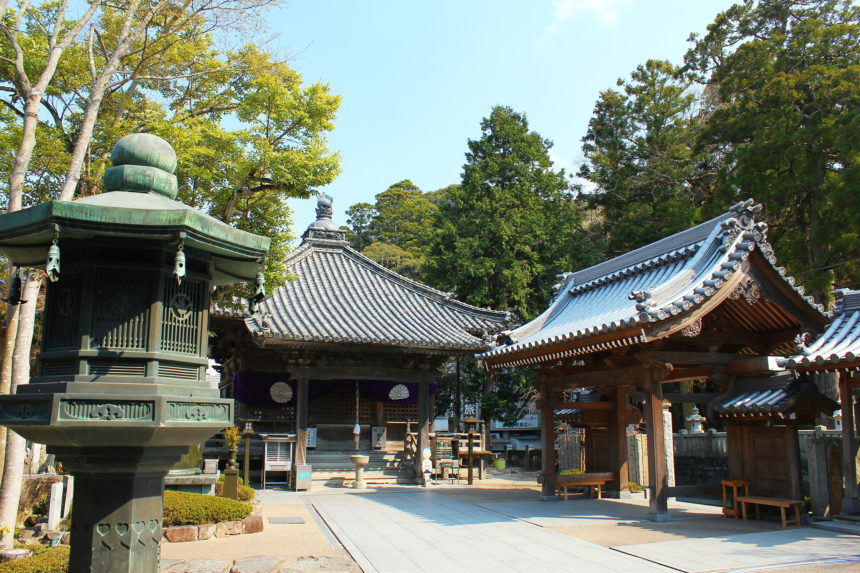 It is said that Kukai founded this temple in 815 on the divine instructions of the deity Dainichi Nyorai (the Cosmic Buddha or Mahavairocana). Legend says that Kukai sculpted a statue of this supreme deity of esoteric Buddhism and enshrined it as the main object of worship. After an 1868 imperial order formally separated Buddhism and Shinto, a statue of the Eleven-Headed Kannon (Avalokiteshvara) was relocated here from an adjacent Shinto shrine. Kannon then became the main deity, and Dainichi Nyorai the subdeity.
Standing near the entrance to the temple is another statue of the bodhisattva Kannon, which people pray to for happiness and good luck. Dainichiji Temple is also notable for having a Korean woman, Kim Myoseon, as its current head priest. She is the first woman and foreign national to perform this role at any of the 88 temples of the Shikoku Pilgrimage.
It is said that Kukai founded this temple in 815 on the divine instructions of the deity Dainichi Nyorai (the Cosmic Buddha or Mahavairocana). Legend says that Kukai sculpted a statue of this supreme deity of esoteric Buddhism and enshrined it as the main object of worship. After an 1868 imperial order formally separated Buddhism and Shinto, a statue of the Eleven-Headed Kannon (Avalokiteshvara) was relocated here from an adjacent Shinto shrine. Kannon then became the main deity, and Dainichi Nyorai the subdeity.
Standing near the entrance to the temple is another statue of the bodhisattva Kannon, which people pray to for happiness and good luck. Dainichiji Temple is also notable for having a Korean woman, Kim Myoseon, as its current head priest. She is the first woman and foreign national to perform this role at any of the 88 temples of the Shikoku Pilgrimage.
<簡体字>
第13号寺庙:大日寺
传说这座寺庙是空海在公元815年奉大日如来(毗卢遮那佛,密宗金刚界五方如来之首,也是三身佛中的法身佛)神谕所建。相传,他亲自雕刻了密教至尊大日如来的佛像,并供奉其为本尊。1868年,天皇正式下令分离佛教和神道教,一座十一面观音像从附近的神社迁来,从此这尊观音成为主佛,大日如来则为次佛。
寺庙入口附近立有另一尊观音菩萨像,人们在此祈求幸福和好运。大日寺的现任住持是来自韩国的女子金昴先,她是第一位在四国遍路88寺里担任住持的外国女性,寺院也因此而闻名。
第13號寺:大日寺
傳說這座寺廟是空海在西元815年奉大日如來(毗盧遮那佛,密宗金剛界五方如來之首,也是三身佛中的法身佛)神諭所建。相傳,他親自雕刻了密教至尊大日如來的佛像,並供奉其為本尊。1868年,天皇正式下令分離佛教和神道教,一座十一面觀音像從附近的神社遷來,從此,這尊觀音成為主佛,大日如來成為次佛。
寺廟入口附近立有另一尊觀音菩薩像,人們到此祈求幸福和好運。大日寺的現任住持是來自韓國的女子金昴先,她是第一位在四國遍路八十八寺裡擔任住持的外國女性,寺院也因此聞名。
Temple 14: Jorakuji
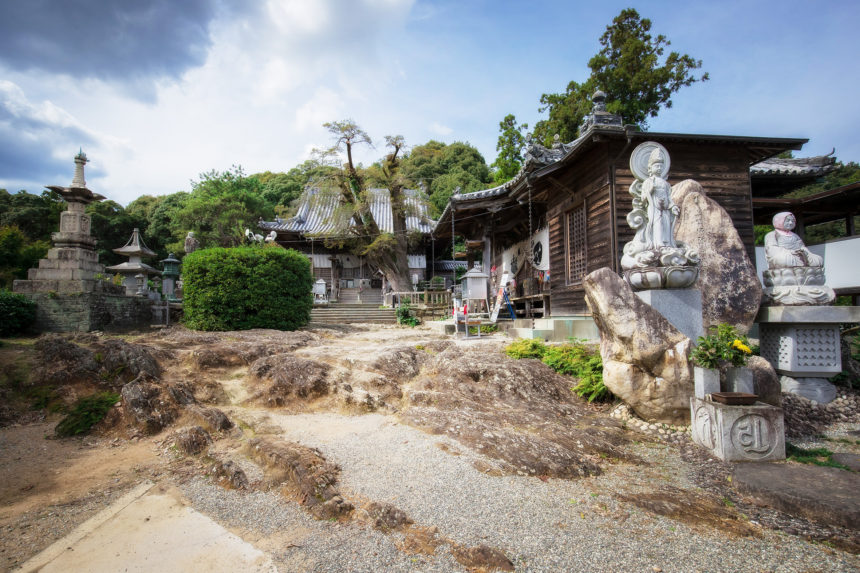 Kukai founded many temples along the Shikoku Pilgrimage, but this is the only one with a main statue of the Buddha of the Future (Maitreya). Legend says that the deity appeared to Kukai during his training, so he carved a statue and enshrined it at this sanctuary, which was likely established in 815.
On the temple grounds is an unusual rock outcrop, known as Ryusuigan no Niwa, or the “Garden of Running Water Rocks.” Also located on-site is the Araragi Daishi, a statue sitting in a ten-meter-high tree. According to local lore, the tree is endowed with special powers to heal disease. It is particularly popular among those seeking to be cured of diabetes.
Kukai founded many temples along the Shikoku Pilgrimage, but this is the only one with a main statue of the Buddha of the Future (Maitreya). Legend says that the deity appeared to Kukai during his training, so he carved a statue and enshrined it at this sanctuary, which was likely established in 815.
On the temple grounds is an unusual rock outcrop, known as Ryusuigan no Niwa, or the “Garden of Running Water Rocks.” Also located on-site is the Araragi Daishi, a statue sitting in a ten-meter-high tree. According to local lore, the tree is endowed with special powers to heal disease. It is particularly popular among those seeking to be cured of diabetes.
<簡体字>
第14号寺庙:常乐寺
四国遍路沿线有许多空海创立的寺庙,但常乐寺是唯一奉未来佛(弥勒佛)为主佛的寺庙。相传弥勒佛曾在空海修行时显现真身,因此,他雕刻了一尊弥勒佛像供奉在这处圣地。据估算,常乐寺应建于公元815年。
寺内有一片罕见的裸露断层的岩石,因此有“流水岩庭园”之称。这里还有一座“紫杉大师”雕像镇坐于高达10米的紫杉树上。当地传说,这棵大树拥有特殊能力,用它的树叶煎水喝,便能治愈疾病,尤其对治疗糖尿病特别有效,很多人因此前来祈愿。
<繁体字>
第14號寺:常樂寺
四國遍路沿線多是由空海創立的寺廟,但常樂寺是唯一侍奉未來佛(彌勒佛)為主佛的寺院,相傳彌勒佛曾在空海修行時顯現真身,因此,他雕刻了一尊彌勒佛像供奉在這處聖地中。據估算,常樂寺應建於西元815年。
寺內有一片罕見的裸露斷層的岩石,因此有「流水岩庭園」之稱。這裡還有一座「紫杉大師」雕像鎮坐於高達10公尺的紫杉樹上,據當地傳說,大樹擁有特殊能力,用樹葉煎水喝便能治癒疾病,尤其對治療糖尿病特別有效,很多人因此前來祈願。
Temple 15: Kokubunji
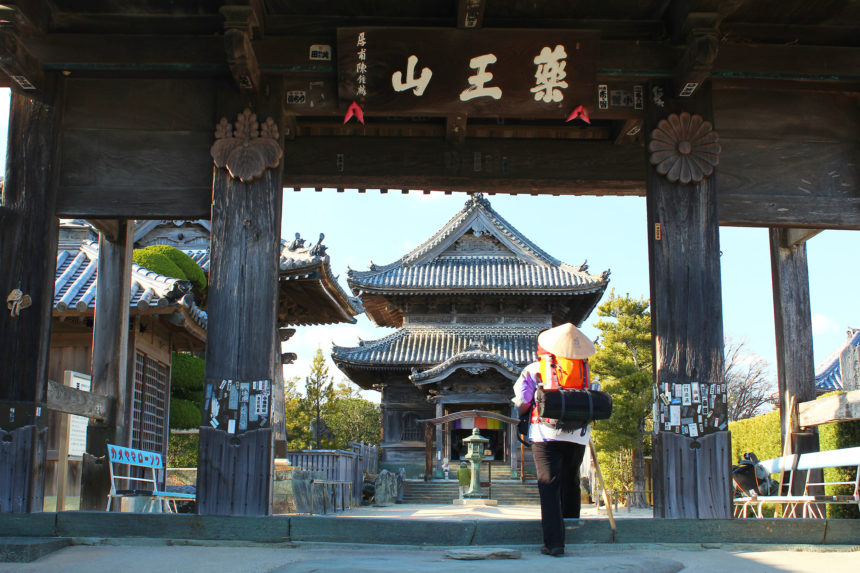 On the precincts of this temple is Awa Kokubunji Teien, a garden said to have been created during the Azuchi-Momoyama period (1568–1603). A dynamic arrangement of rocks springs from its many small hills, and it is a designated Place of Scenic Beauty.
The priest Gyoki (668–749) founded the temple in 741. He came to Tokushima at the request of Emperor Shomu (701–756), who had set out to unify the country by establishing a Kokubunji temple in each of the country’s provinces. Although it was originally affiliated with the Hoso sect, Kokubunji changed to the Shingon sect in 815 when Kukai trained there. It was destroyed by fire during the Momoyama period (1573–1615) and fell into ruin. In 1741, it was rebuilt and became part of the Soto school of Zen Buddhism.
On the precincts of this temple is Awa Kokubunji Teien, a garden said to have been created during the Azuchi-Momoyama period (1568–1603). A dynamic arrangement of rocks springs from its many small hills, and it is a designated Place of Scenic Beauty.
The priest Gyoki (668–749) founded the temple in 741. He came to Tokushima at the request of Emperor Shomu (701–756), who had set out to unify the country by establishing a Kokubunji temple in each of the country’s provinces. Although it was originally affiliated with the Hoso sect, Kokubunji changed to the Shingon sect in 815 when Kukai trained there. It was destroyed by fire during the Momoyama period (1573–1615) and fell into ruin. In 1741, it was rebuilt and became part of the Soto school of Zen Buddhism.
<簡体字>
第15号寺庙:国分寺
寺内的“阿波国分寺庭园”是一座池泉观赏式庭园,相传建于安土桃山时代(1568-1603)。园内诸小丘上突兀参差的岩石错落有致,营造出灵动的动态感,这正是它的特别之处,也是这座庭园被指定为国家名胜的原因所在。
圣武天皇(701-756)曾下令在日本各地统一建造“国分寺”,行基和尚(668-749)受命来到德岛,于741年建立了这座寺庙。国分寺原本属于法相宗,815年空海在此修行时转为真言宗,到了桃山时代(1573-1615),寺庙失火焚毁,1741年重建后归属禅宗曹洞宗。
<繁体字>
第15號寺:國分寺
寺內的「阿波國分寺庭園」是一座池泉觀賞式庭園,相傳建於安土桃山時代(1568-1603)。園內小丘上參差突出的岩石錯落有致,營造出靈動的動態感,這正是其特別之處,也是這座庭園被指定為國家名勝的原因所在。
聖武天皇(701-756)曾下令在日本各地統一建造「國分寺」,行基和尚(668-749)受命來到德島,於西元741年建立了這座寺廟。國分寺原本屬於法相宗,西元815年空海在此修行時轉為真言宗,到了桃山時代(1573-1615),寺廟失火焚毀,1741年重建後歸屬禪宗曹洞宗。
Temple 16: Kannonji
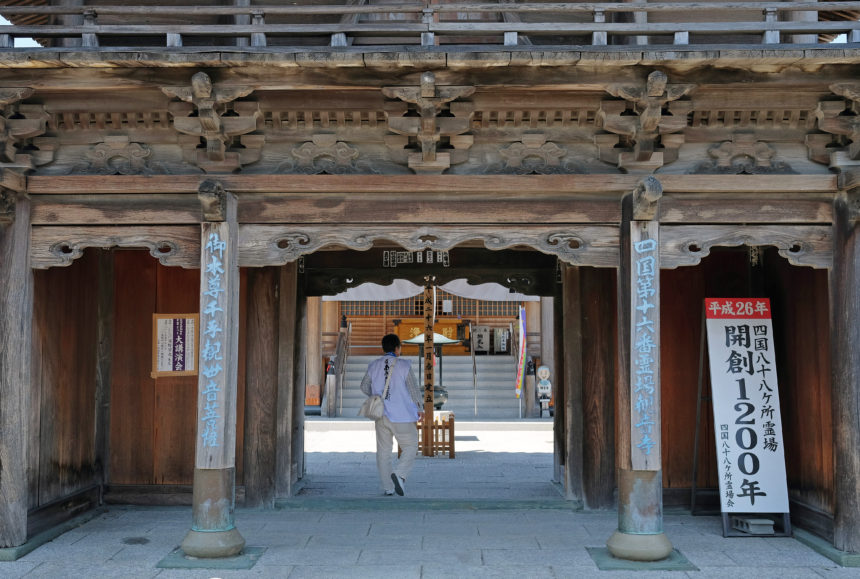 A votive tablet in the main hall, depicting a woman surrounded by flames, is one of the notable features of this temple. In a story from the Meiji era (1868–1912), it is said that a pilgrim took shelter here from the rain. As she was drying her clothes by the fire, her body suddenly ignited. Realizing it was divine punishment for mistreating her elderly mother-in-law, the woman repented and later dedicated the picture to the temple’s deity.
It is said that Emperor Shomu (701–756) ordered the establishment of Kannonji and that Kukai came in 816 and carved the statue of the main deity, the Thousand-Armed Kannon (Avalokiteshvara). On the grounds are also a number of guardian jizostatues. Among them is Yonaki Jizo to whom parents pray for help in getting small children to stop crying at night.
A votive tablet in the main hall, depicting a woman surrounded by flames, is one of the notable features of this temple. In a story from the Meiji era (1868–1912), it is said that a pilgrim took shelter here from the rain. As she was drying her clothes by the fire, her body suddenly ignited. Realizing it was divine punishment for mistreating her elderly mother-in-law, the woman repented and later dedicated the picture to the temple’s deity.
It is said that Emperor Shomu (701–756) ordered the establishment of Kannonji and that Kukai came in 816 and carved the statue of the main deity, the Thousand-Armed Kannon (Avalokiteshvara). On the grounds are also a number of guardian jizostatues. Among them is Yonaki Jizo to whom parents pray for help in getting small children to stop crying at night.
<簡体字>
第16号寺庙:观音寺
观音寺的一大看点是本堂中的一幅画,画中描绘了一个被火焰包围着的女子。据明治时代(1868-1912)的故事所述,一个朝圣的女子曾在这里避雨,当她在柴火边烘干白衣时,身体忽然着火,女子意识到这是她虐待年迈婆婆招致的报应,幡然悔悟之后便向寺中进奉了这幅画。
相传观音寺为圣武天皇(701-756)下令建造,空海在816年来到此地并雕刻了本尊千手观音像。寺中另有很多地藏菩萨像,其中包括一尊“夜哭地藏”,因此常有父母来此祈愿,期望能止小儿夜哭。
<繁体字>
第16號寺廟:觀音寺
觀音寺的一大亮點是本堂中的一幅畫,畫中描繪了一個被火焰包圍著的女子。這是源自明治時代(1868-1912)的故事,一位朝聖女子曾在這裡避雨,當她在柴火邊烘乾白衣時,身體忽然著火,女子意識到這是她虐待年邁婆婆招致的報應,幡然悔悟之後便向寺中進奉了這幅畫。
相傳觀音寺為聖武天皇(701-756)下令建造,空海在西元816年到來並雕刻了本尊千手觀音像。寺中另有很多地藏菩薩像,其中包括一尊「夜哭地藏」,因此常有父母來此祈願,期望能止小孩夜哭。
Temple 17: Idoji
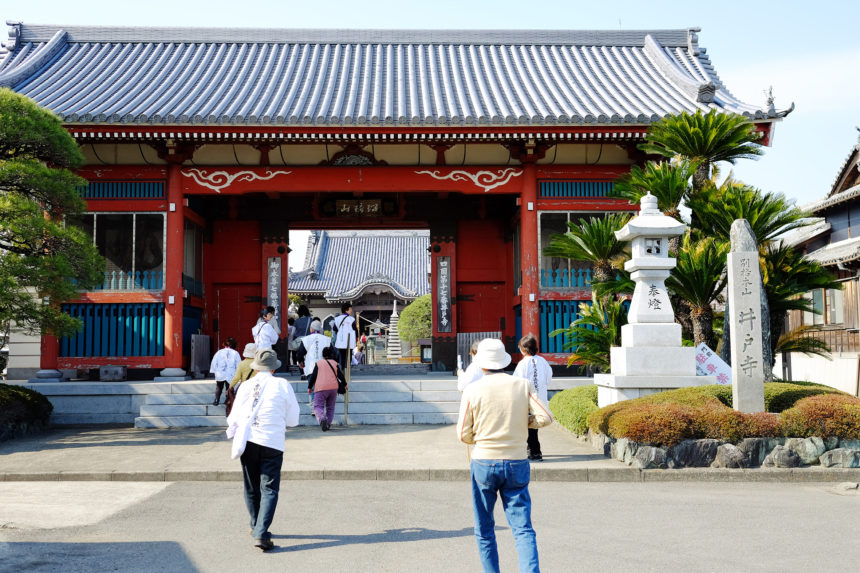 Emperor Tenmu (631–686) ordered this temple’s establishment in 673. It is known for its rather unusual number of statues—seven in all—of the Buddha of Healing (Bhaisajya), who is believed to answer health-related prayers. Six of the statues are replicas of those lost to fire. Only one of the original seven remains.
Kukai is said to have visited this temple in 815. Legend has it that he took pity on the local people, who were suffering from a shortage of drinking water, and dug a well with his staff. The well can still be seen today inside a small enclosure on the temple grounds. Tradition holds that if you see your face reflected in its surface, no harm will come to you for the next three years.
Emperor Tenmu (631–686) ordered this temple’s establishment in 673. It is known for its rather unusual number of statues—seven in all—of the Buddha of Healing (Bhaisajya), who is believed to answer health-related prayers. Six of the statues are replicas of those lost to fire. Only one of the original seven remains.
Kukai is said to have visited this temple in 815. Legend has it that he took pity on the local people, who were suffering from a shortage of drinking water, and dug a well with his staff. The well can still be seen today inside a small enclosure on the temple grounds. Tradition holds that if you see your face reflected in its surface, no harm will come to you for the next three years.
<簡体字>
第17号寺庙:井户寺
天武天皇(631–686)于673年下令建造了这座寺庙。它以供奉七座之多的药师如来像而闻名,也是四国遍路中唯一一座以七座药师如来坐像为本尊的寺庙灵场。所谓“药师”,即好比医师,治的是众生的贪、瞋、痴念,而现实中信众相信药师佛同样能保身体健康。当初的七座佛像至今只留存一座,另六座均遭大火焚毁,现存的是复制品。
相传空海在815年来到此地,因怜悯缺水的当地人,一夜之间用自己的锡杖掘出一口新井。如今依然可以在寺内的一个小围栏里找到这口井。传说如果你在井水中看到自己的脸,那么未来三年都不会遭遇不幸。井边有“加持水”,只需支付100日元(容器费用)就可以带回家。
<繁体字>
第17號寺:井戶寺
天武天皇(631-686)於西元673年下令建造了這座寺廟,以供奉七座藥師如來像而聞名,這也是四國遍路中唯一以七座藥師如來坐像為本尊的寺廟靈場。所謂「藥師」,即好比醫師,治的是眾生的貪、瞋、癡念,而現實中信眾相信藥師佛同樣能保佑身體健康。最初的七座佛像至今只留存有一座,另六座均遭大火焚毀,現存的是複製品。
相傳空海在西元815年來到此地,因憐憫缺水的當地人,一夜之間用自己的錫杖掘出一口新井。如今依然可以在寺內的一個小圍欄裡找到這口井。根據傳說,如果你在井水裡看到自己的臉,那麼未來三年裡都不會遭遇不幸。井邊有「加持水」,只需支付100日圓(容器費用)就可以帶回家。
Kinryo Spring
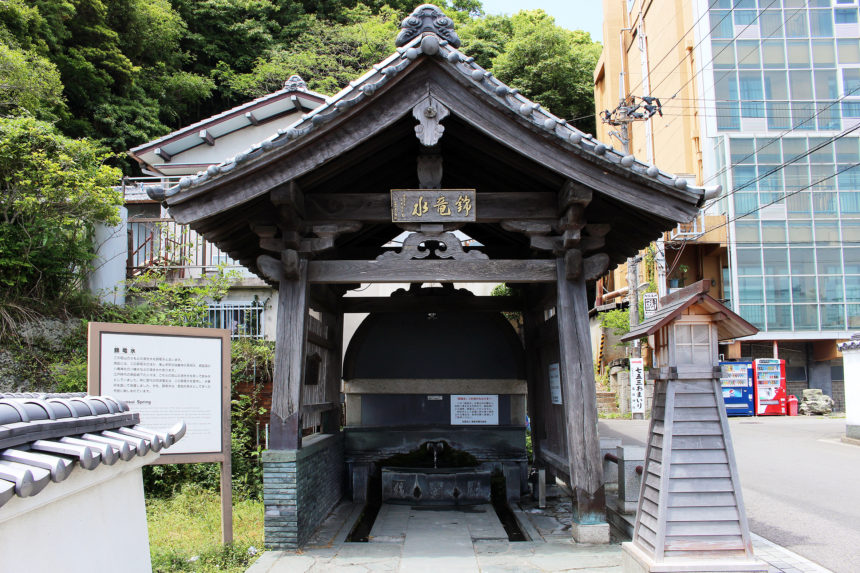 This is one of the best-quality natural springs in Tokushima. During the Edo period (1603–1868), the ruling Hachisuka family considered it an important source of drinking water for the citizenry, and appointed an officer to oversee it. Nobles and commoners alike valued the water for its pure quality and taste.
A small spring house provides access to this landmark of the Teramachi district. Residents of Tokushima can use the well freely, and they often still come to fill up empty bottles. Water from Kinryo Spring is also used in the production of local sweets and alcohol.
This is one of the best-quality natural springs in Tokushima. During the Edo period (1603–1868), the ruling Hachisuka family considered it an important source of drinking water for the citizenry, and appointed an officer to oversee it. Nobles and commoners alike valued the water for its pure quality and taste.
A small spring house provides access to this landmark of the Teramachi district. Residents of Tokushima can use the well freely, and they often still come to fill up empty bottles. Water from Kinryo Spring is also used in the production of local sweets and alcohol.
<簡体字>
锦龙水
这是德岛最好的天然泉水之一,也是眉山泉水群中最著名的“名水”。在江户时代(1603-1868),执政的蜂须贺家族将其视为德岛民众重要的饮用水源,并专门任命了一名官员来监督管理,当时的贵族和平民都十分推崇锦龙水的纯净水质和口感。
寺町区的这座地标泉眼上建有一座小屋,德岛居民可以免费取水,至今人们仍然经常带着空瓶子前来装水。当地出品的甜点和酒类也会使用锦龙水,比如眉山脚的“瀑布烧饼”。
<繁体字>
錦龍水
這是德島最好的天然泉水之一,也是眉山泉水群中最著名的「名水」。在江戶時代(1603-1868),執政的蜂須賀家視其為德島民眾重要的飲用水源,專門任命了一名官員來監督管理,當時的貴族和平民都十分推崇錦龍水的純淨水質和口感。
寺町區這座地標性的泉眼上建有一座小屋,德島居民可以免費取水,人們至今仍然經常帶著空瓶子前來裝水。當地出品的甜點和酒類也會使用錦龍水,比如眉山腳的「瀧之烤麻糬」。
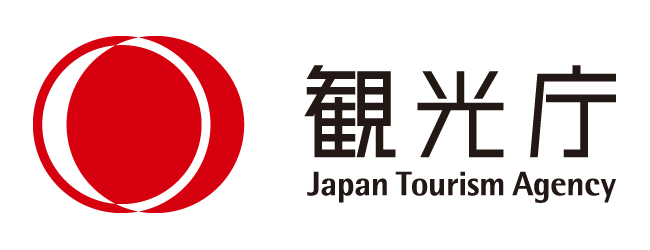 This English-language text was created by the Japan Tourism Agency.
This English-language text was created by the Japan Tourism Agency. 

